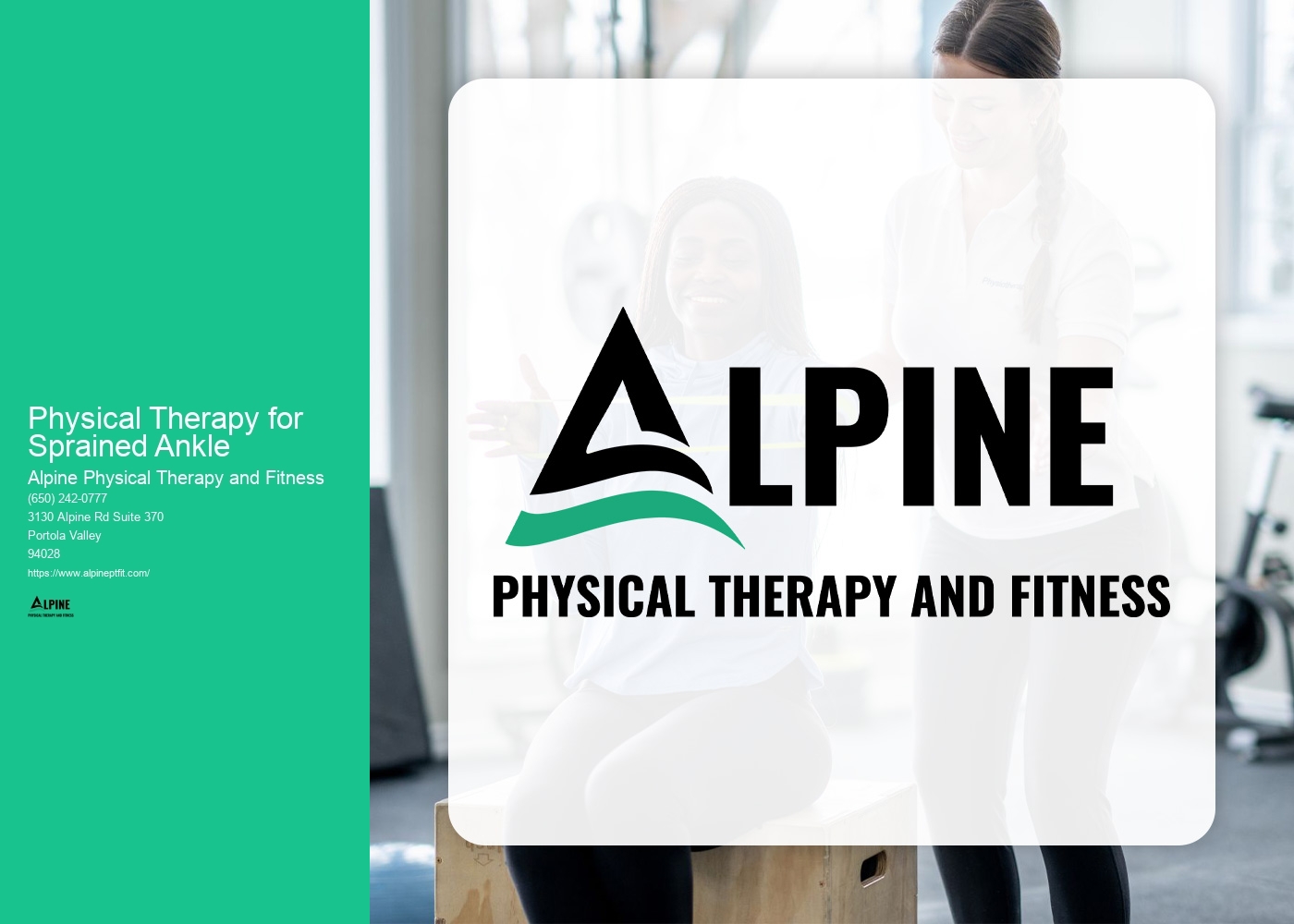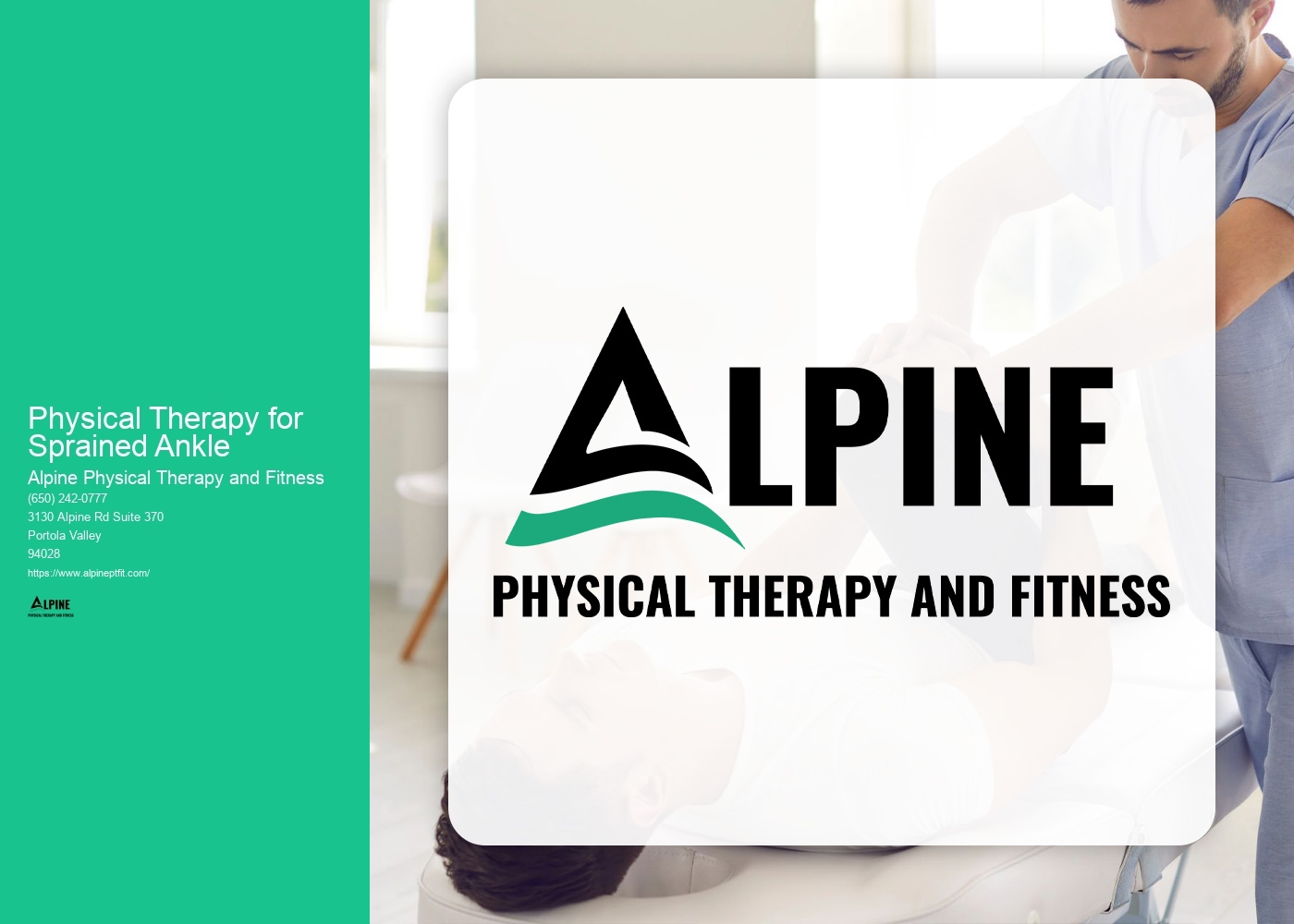

Recovering from a sprained ankle can vary depending on the severity of the injury. In general, it can take anywhere from a few weeks to several months for a sprained ankle to fully heal. The initial phase of recovery involves rest, ice, compression, and elevation (RICE). This helps reduce swelling and pain. After the acute phase, rehabilitation exercises are crucial for restoring strength, stability, and range of motion in the ankle. These exercises may include ankle circles, calf raises, heel slides, and balance exercises. It is important to start with gentle movements and gradually increase intensity as the ankle heals.
When rehabilitating a sprained ankle, there are several effective exercises that can aid in the recovery process. Strengthening exercises such as ankle dorsiflexion and plantarflexion exercises, resistance band exercises, and calf raises can help improve the stability and strength of the ankle. Range of motion exercises like ankle circles and alphabet exercises can also be beneficial in restoring flexibility and mobility. Additionally, balance exercises such as single-leg stands and wobble board exercises can help improve proprioception and prevent future ankle sprains.
Stretching plays a crucial role in ankle sprain recovery. Gentle stretching exercises can help improve flexibility and prevent stiffness in the ankle joint. Some specific stretches that can aid in ankle sprain recovery include calf stretches, Achilles tendon stretches, and ankle dorsiflexion stretches. These stretches should be performed with caution and within a pain-free range of motion. It is important to consult with a healthcare professional or physical therapist to ensure proper technique and guidance during the stretching exercises.

In the early stages of a sprained ankle, ice is generally recommended to reduce swelling and pain. Applying an ice pack to the affected area for 15-20 minutes every 2-3 hours can help alleviate symptoms. After the initial swelling has subsided, heat therapy can be beneficial in promoting blood flow and relaxation of the muscles. Heat can be applied using a warm towel or a heating pad for 15-20 minutes at a time. However, it is important to consult with a healthcare professional to determine the most appropriate treatment for your specific condition.
Physical therapy can be highly effective in preventing future ankle sprains. A physical therapist can assess your ankle strength, flexibility, and balance and develop a personalized exercise program to address any weaknesses or imbalances. They can also provide guidance on proper technique and form during activities that may put stress on the ankle. Regular physical therapy sessions can help improve ankle stability, proprioception, and overall lower limb function, reducing the risk of future sprains. The frequency of physical therapy sessions will depend on the severity of the sprain and the individual's progress. Typically, sessions may be scheduled once or twice a week initially and then gradually reduced as the ankle improves.

In addition to traditional physical therapy, there are other treatments and modalities that can aid in the recovery of a sprained ankle. These may include manual therapy techniques such as joint mobilization and soft tissue massage to improve joint mobility and reduce muscle tension. Electrical stimulation and ultrasound therapy can also be used to promote healing and reduce pain. Additionally, bracing or taping techniques may be recommended to provide support and stability to the ankle during activities. It is important to consult with a healthcare professional or physical therapist to determine the most appropriate additional treatments for your specific condition.
In conclusion, recovering from a sprained ankle can take time and patience. Rehabilitation exercises, including strengthening, stretching, and balance exercises, are essential for restoring function and preventing future sprains. Ice and heat therapy can be used to reduce swelling and pain at different stages of the recovery process. Physical therapy can play a crucial role in preventing future ankle sprains by addressing weaknesses and imbalances. Additional treatments such as manual therapy, electrical stimulation, and bracing may also be beneficial. It is important to work closely with a healthcare professional or physical therapist to develop an individualized treatment plan and ensure a successful recovery.

Yes, there are specific techniques that physical therapists use to treat vestibular disorders. One common technique is called vestibular rehabilitation therapy (VRT), which involves a series of exercises and activities designed to improve balance and reduce dizziness. These exercises may include gaze stabilization exercises, which help the patient maintain focus on a stationary object while moving their head; balance training exercises, which help improve stability and coordination; and habituation exercises, which involve exposing the patient to movements or positions that provoke their symptoms in order to desensitize their vestibular system. Additionally, physical therapists may use manual therapy techniques, such as joint mobilizations and soft tissue mobilizations, to address any musculoskeletal issues that may be contributing to the vestibular disorder. Overall, physical therapy can play a crucial role in helping individuals with vestibular disorders regain their balance and improve their quality of life.
Rehabilitating patients with complex regional pain syndrome (CRPS) requires a comprehensive and multidisciplinary approach that incorporates various best practices. These include early intervention, pain management strategies, physical therapy, occupational therapy, psychological support, and patient education. Early intervention is crucial to prevent the progression of CRPS and improve outcomes. Pain management strategies may involve a combination of medications, nerve blocks, and alternative therapies such as acupuncture or transcutaneous electrical nerve stimulation (TENS). Physical therapy focuses on improving range of motion, strength, and function through exercises and manual techniques. Occupational therapy helps patients regain independence in daily activities and may involve adaptive equipment or modifications. Psychological support, including cognitive-behavioral therapy, can address the emotional and psychological impact of CRPS. Patient education plays a vital role in empowering patients to actively participate in their rehabilitation and manage their symptoms effectively. By implementing these best practices, healthcare professionals can optimize the rehabilitation process for patients with CRPS.
Yes, visceral manipulation can indeed be used in physical therapy to address organ-related issues. Visceral manipulation is a specialized technique that focuses on the manipulation of the internal organs to improve their function and alleviate any related symptoms. By applying gentle, specific manual techniques to the organs, physical therapists can help restore mobility, enhance blood flow, and promote optimal organ function. This approach can be particularly beneficial for individuals experiencing organ-related issues such as digestive disorders, pelvic pain, urinary dysfunction, and respiratory problems. Through the use of visceral manipulation, physical therapists can provide targeted treatment that addresses the root cause of these issues, leading to improved overall health and well-being.
Physical therapy has been shown to be effective in improving mobility and function in older adults with frailty. Frailty is characterized by a decline in physical function and increased vulnerability to stressors. Physical therapy interventions, such as strength training, balance exercises, and gait training, can help improve muscle strength, balance, and coordination, which are essential for maintaining mobility and function. Additionally, physical therapy can also address specific impairments, such as joint stiffness or muscle weakness, through targeted interventions. By addressing these physical limitations, physical therapy can help older adults with frailty regain independence, reduce the risk of falls, and improve overall quality of life.
The principles of rehabilitation for a baseball pitcher with shoulder issues involve a comprehensive approach that focuses on restoring strength, flexibility, and stability to the shoulder joint. The rehabilitation program typically includes a combination of exercises, manual therapy techniques, and modalities such as heat or ice therapy. Specific exercises may include rotator cuff strengthening exercises, scapular stabilization exercises, and range of motion exercises. It is important to gradually progress the intensity and volume of the exercises to avoid overloading the shoulder. Additionally, proper throwing mechanics and technique should be emphasized to prevent further injury. The rehabilitation process may also involve addressing any underlying biomechanical issues or muscle imbalances that may have contributed to the shoulder issues. Overall, the goal of rehabilitation is to not only alleviate pain and restore function but also to prevent future injuries and optimize performance.